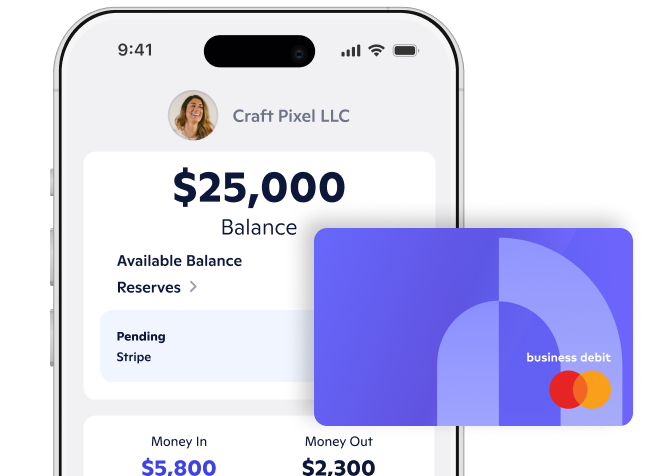
arketing for small businesses means making the most out of your small budget and getting the highest return from sales. With a plethora of marketing strategies and ultimate guides that you can find online, how do you know which marketing campaign to pursue?
Below we'll take a look at a few basic guides for small business marketing, and a few points to consider before you make your decision.
The process of effective marketing
In order to grow your business, you need an effective marketing strategy. You may survive on word of mouth alone, although in the age of digital advertising you'd be hard pressed to go against your competitors if you don't have a viable marketing plan.
The four P's of marketing
You should keep in mind the basics of marketing which are the four P's - product, price, promotion and place. If you're in the services business, you also need to consider the process, people and physical evidence.
The purpose of effective marketing
When you have a sound marketing strategy, you can follow up with an actionable plan in line with those strategies. You'll build long-term relationships with your customers or clients, drive more sales, and have more people coming through your door because you have a good reputation.
What drives people to buy?
Why do some businesses succeed at marketing while others have customers cringing when they hear their message? As a business, you need to get inside the minds of your customers and ask yourself, 'what is the emotional reason they are looking for my solution?'
There's a reason why people love to read reviews about products before they buy something. They want to know how others felt about using it. People justify their purchases with logic, but it's their emotion that drives their buying impulse.
People make buying decisions because they are inspired, happy, or even frustrated. When you can find the emotional trigger of your customers, you can position your products and services to connect with them on that level, simultaneously building your brand and making more sales.
Don't make everyone a customer
Once you've done market research and know who your customers are, you should segment your target market. Narrowing down your focus to appeal to select customers instead of everyone will make your message more effective, as you're appealing to their needs and desires. This not only translates into more success for your business, but by segmenting you save on marketing costs as well.
Coming up with a marketing plan
The product
Before you come up with a marketing plan, you have to identify what makes your product stand out from the rest. You want to identify the unique value you're providing by introducing your products or services to your future customers, and then plan a product launch that your target audience will love.
Is your product original? Will you develop it based on a new idea or will you be marketing a fully developed product? If it's intangible like a service business, how will you make it different in terms of customer experience? Answering all these questions will determine if you should build a marketing strategy around your product idea in the first place, or rethink your idea.
Pricing your product
Once you know you have a winning product on your hands, it's time to decide how to price it for the market. While there is no single way to determine the right price, consider it carefully as it will affect your long-term business strategy.
As a small business, asking questions during basic market research can tell you what people are willing to pay for a product or service. This helps you size the demand and how to price it accordingly.
You also need to consider the fixed and variable cost for operating your business. Determine your gross margin and ensure you can still cover your overheads when choosing a pricing methodology. The most important outcome from choosing the right pricing is to stay competitive while also being able to turn a profit.
Place and distribution of your products and services
The goal of any marketing plan is to drive more sales. With that in mind, you need to outline how you will get your products into the hands of your customers once you make those sales.
Depending on the type of small business, you need to know your distribution channels. Manufacturing processes to consumers and all intermediaries that are involved will need to be determined. Your goal is to choose a distribution channel that's efficient, so your customers can have access to your products in a timely manner.
Understanding your customers' needs and your own products will help in the above regard. Try to determine the factors that will affect your customers' buying behaviour - are they likely to buy online or from a retail store for example. And when it comes to your products, things like packaging, inventory levels and payment methods should be taken into consideration, among other things.
Promotion and advertising
When it comes to promoting your business, there are lots of different directions you can take. But to be successful with your plan you need to be laser focused with your marketing message. You should see your products from your target audience's perspective, and consider promotional activities that best reach out to them that highlights what's unique about what you offer.
Try to sum up the value of what you give to your customers. The more clear benefits you convey in your marketing message, the better your customers will respond to it. Your challenge when it comes to marketing is to come up with the best strategy based on your budget, while reaching the biggest audience.
Types of marketing for small businesses
Modern marketing offers so many choices to the small business owner. You can find guides to marketing both online and offline, although that will leave you spoilt for choice. Pursuing every single opportunity and trying to learn every marketing tool will only cause confusion for the new business owner. Moreover, you could be spreading out your efforts too thin and not gaining any meaningful traction.
Rather than pursuing the most 'popular' or latest marketing plan, you should evaluate your time and financial resources. Only then you'll know which plan to follow, and which elements you should drop or put off to a later date.
For small businesses, below are a few tried and true methods, although the list is by no means exhaustive.
Advertising
If you're a small business owner that caters to a local community, traditional print advertising sent out through direct mail can have a more targeted and personal effect. Targeted recipients are more likely to respond to a tangible offer than a spam email. You should also check with local newspapers if they have special interest audiences that will be interested in your products.
Online advertising is also a great option for smaller budgets - you can cast a wider net and reach a global audience. However, things can get pretty technical and you need to learn each platform's intricacies and follow their various advertising policies.
Affiliate marketing
Affiliate marketing is where someone can earn a commission from promoting a product or service. Amazon is one giant example of affiliate marketing. As a small business, you can benefit from an army of affiliates promoting your offers. You'll only have to pay a commission when they make a sale. But the great thing is they're doing most of the heavy lifting of bringing the customers to you.
As for working with affiliates, you should provide effective marketing materials so they have an easier time with their efforts. An attractive commission plan will also attract more affiliates to sign up. Having regular newsletters sent out to your affiliates and informing them of new offers and incentives will keep them enthusiastic about mentioning your brand to their audiences.
Content marketing
When you're building your brand, a great strategy is to use content marketing. The value of content marketing is you're building a relationship with your customers, instead of directly asking for the sale. In contrast to advertising, content marketing is not meant to be promotional, because you'll be creating content that is meant to educate, entertain and inform your audience - with a clear call to action that leads them to discover more about your brand.
Blog posts are the most popular form of content marketing. But you can get creative and produce other forms of content to attract and engage customers. For example, use infographics to provide informative solutions to common problems, case studies on how your service solved a client's problem, videos that tell the story of your company in a compelling way.
Content marketing, as with search engine optimization, is a long-term marketing plan. In fact both strategies are not mutually exclusive, as some tasks do overlap.
Social media marketing
Almost everyone on the planet is using at least one form of social media. And a good chunk of that number will be interested in what you sell, provided you know your target market. There are free and paid ways to use social media marketing to your company's benefit, and it's good to learn them.
When deciding on what social media platform to use, you should know where your audiences are likely to be. Different platforms will appeal to different demographics, so choose one or two platforms that fit your customers' profile. You probably won't have time to learn to use all the social media platforms that are available anyway.
Conclusion
Marketing is a business necessity and there is really no way around it. Hopefully with the tips above you'll have an idea of which plan to pursue and can take your business to the next level.






